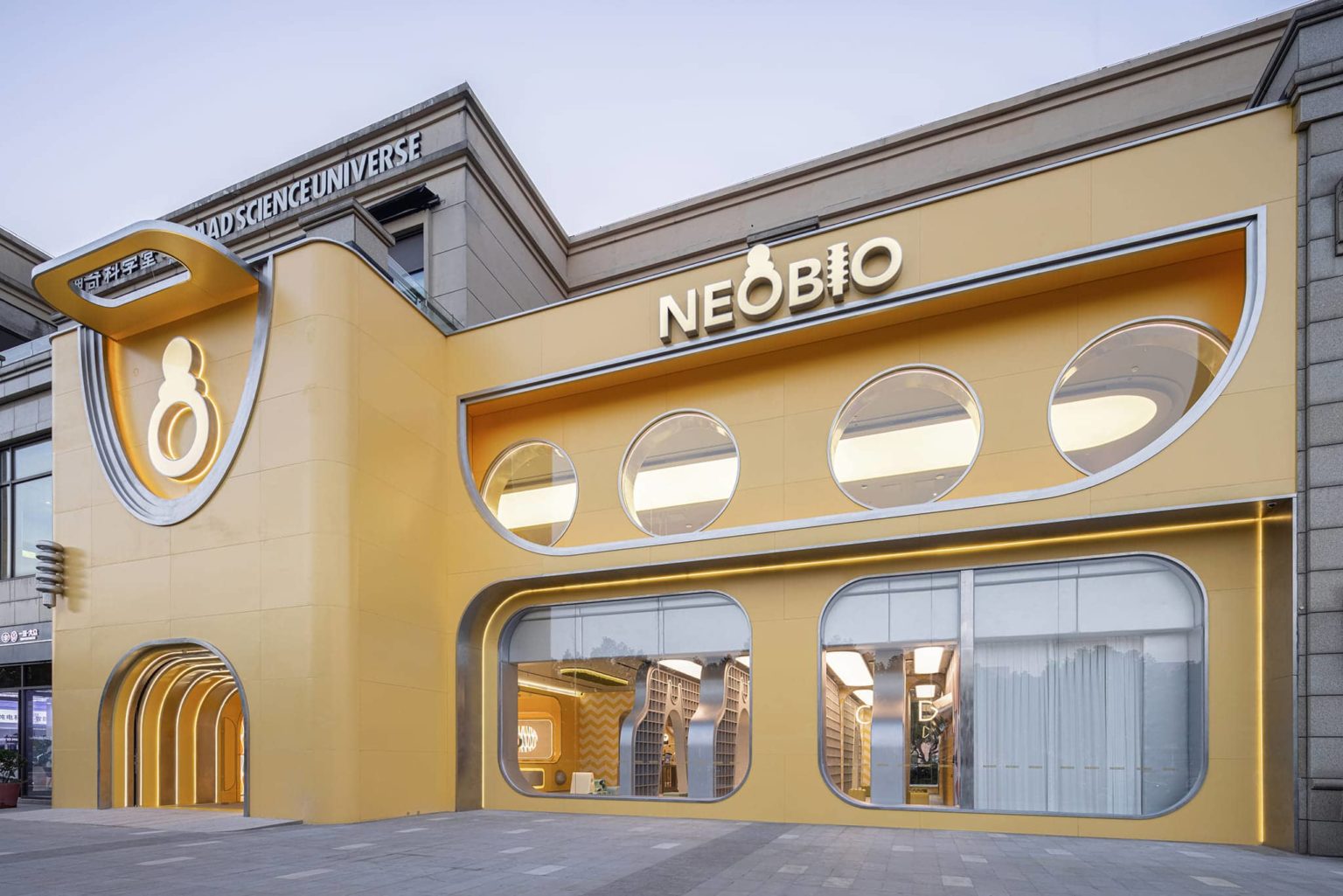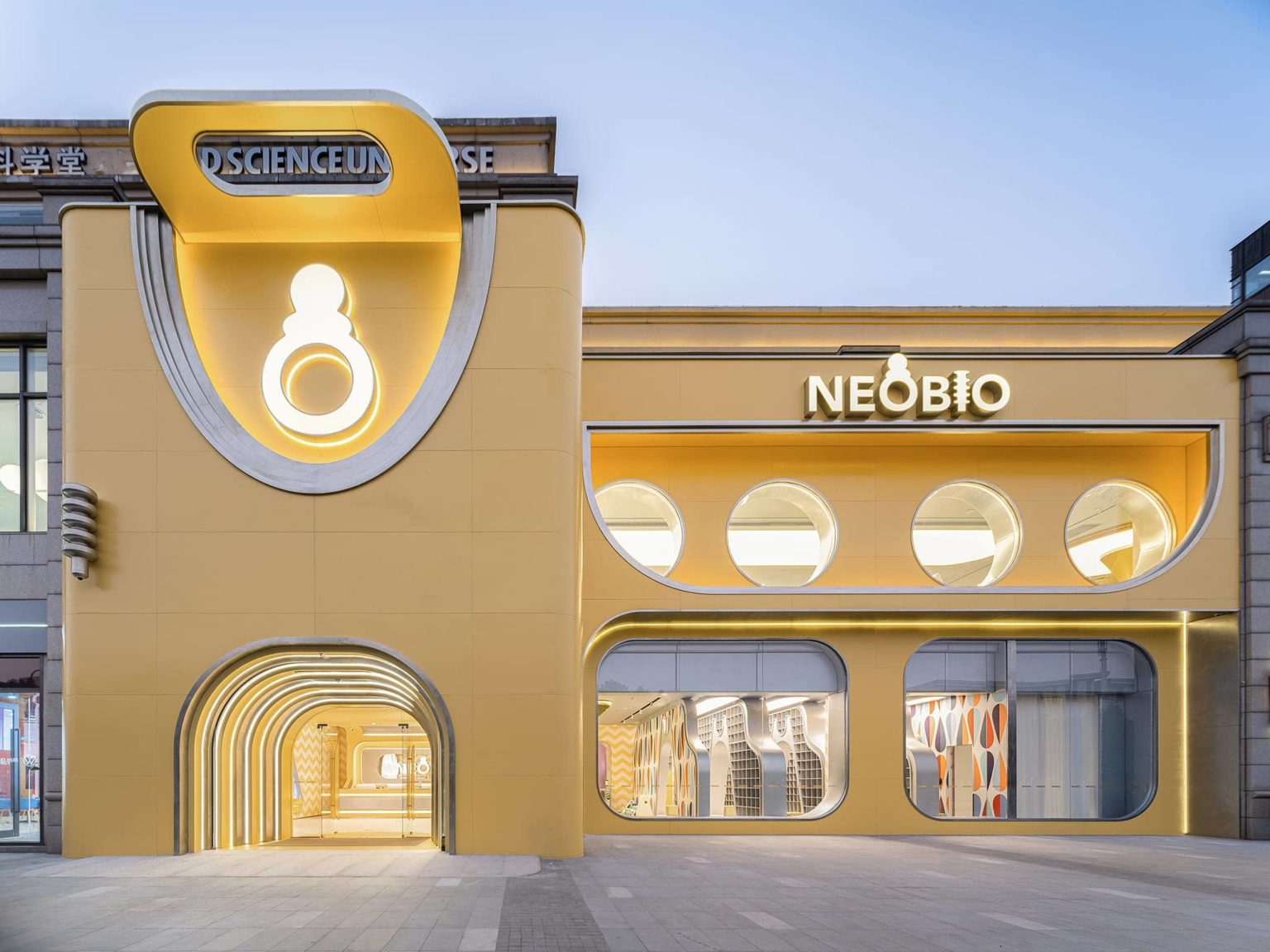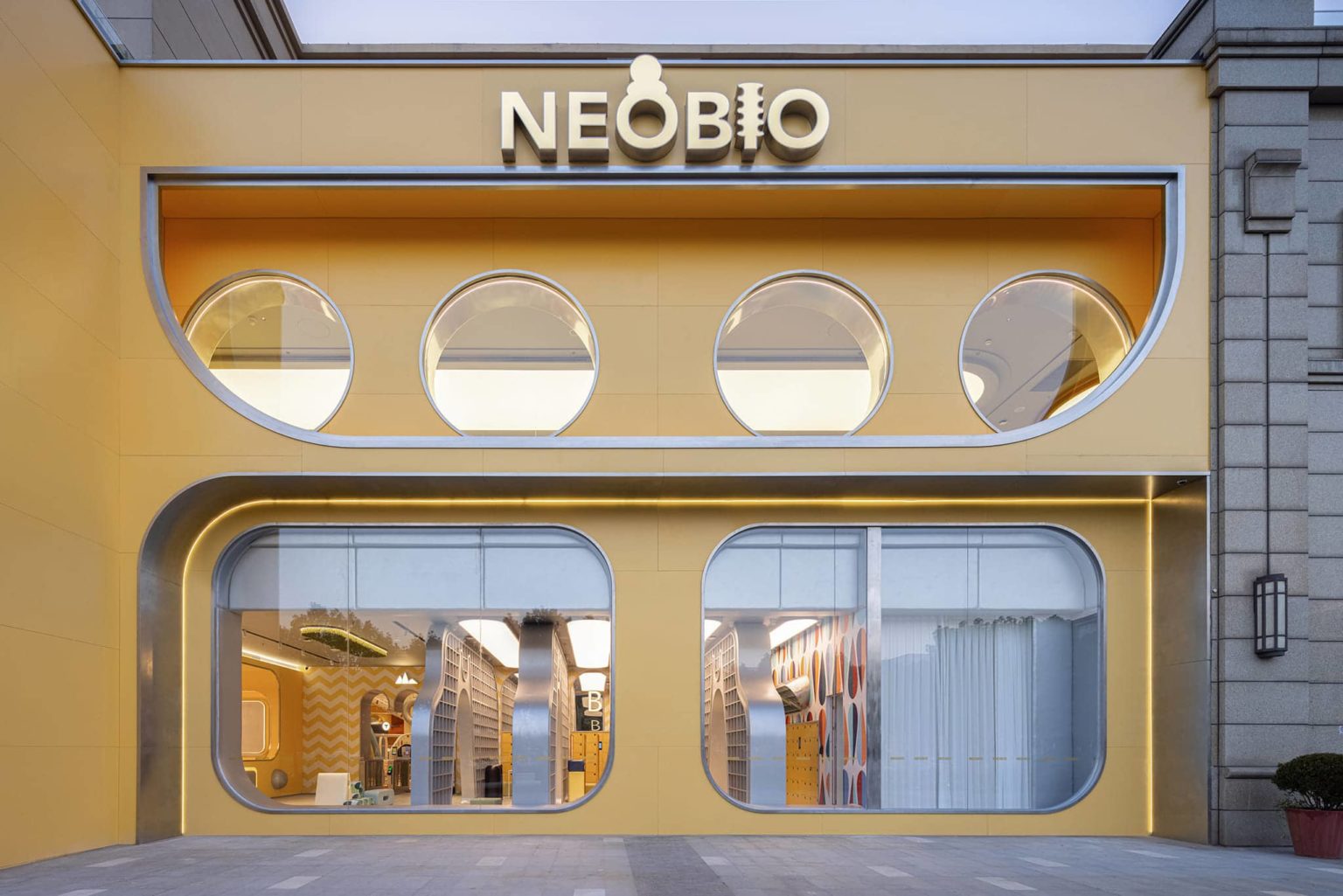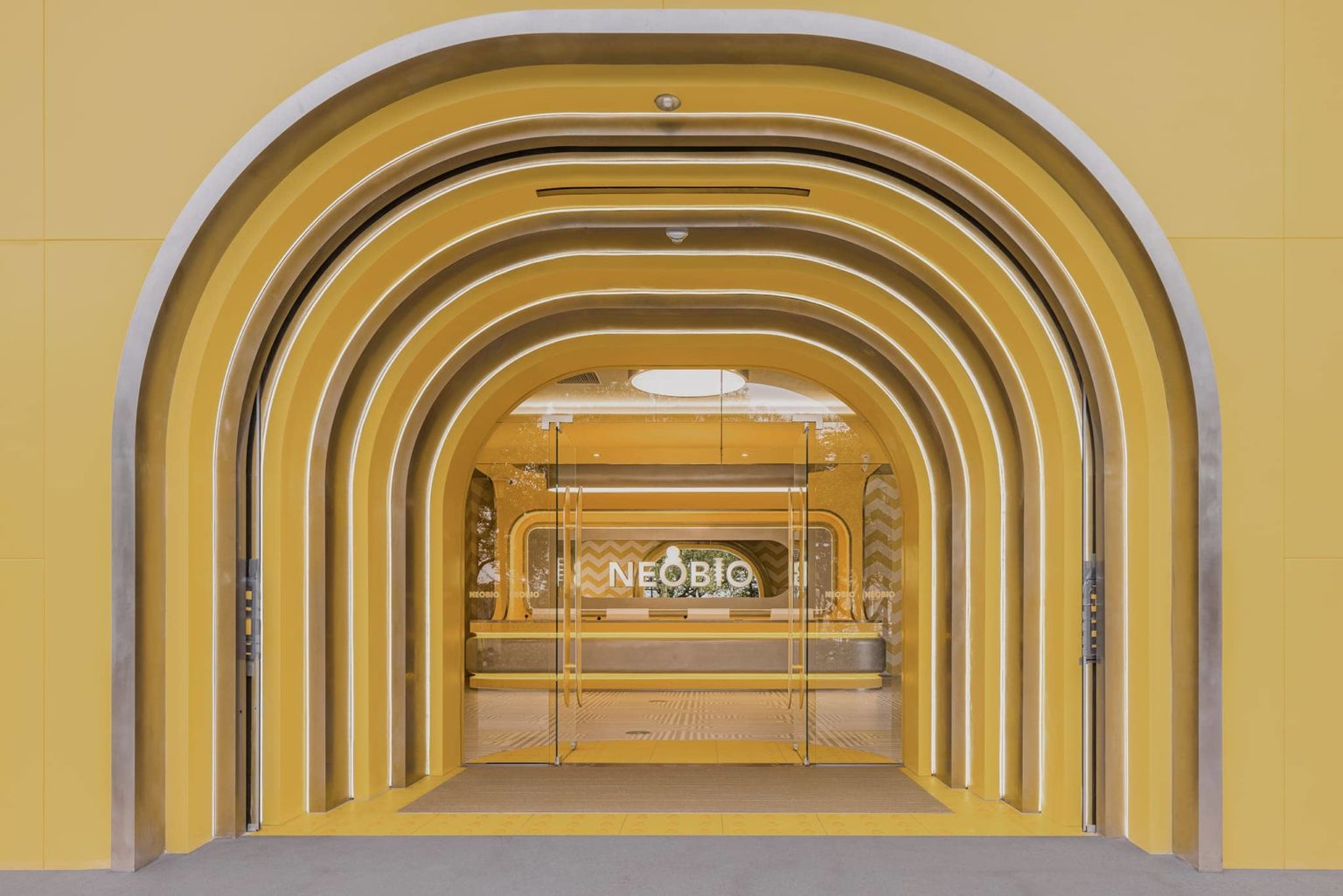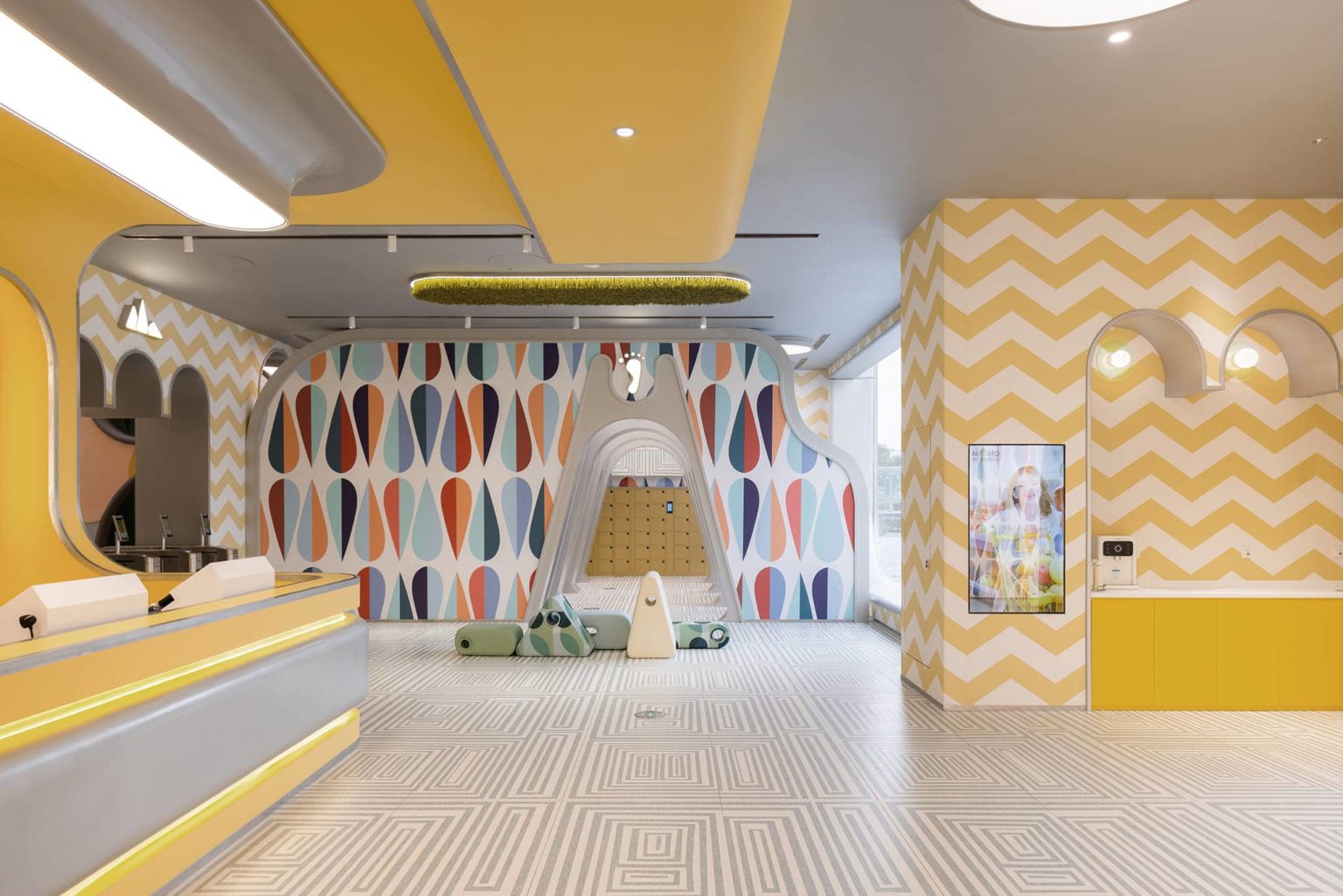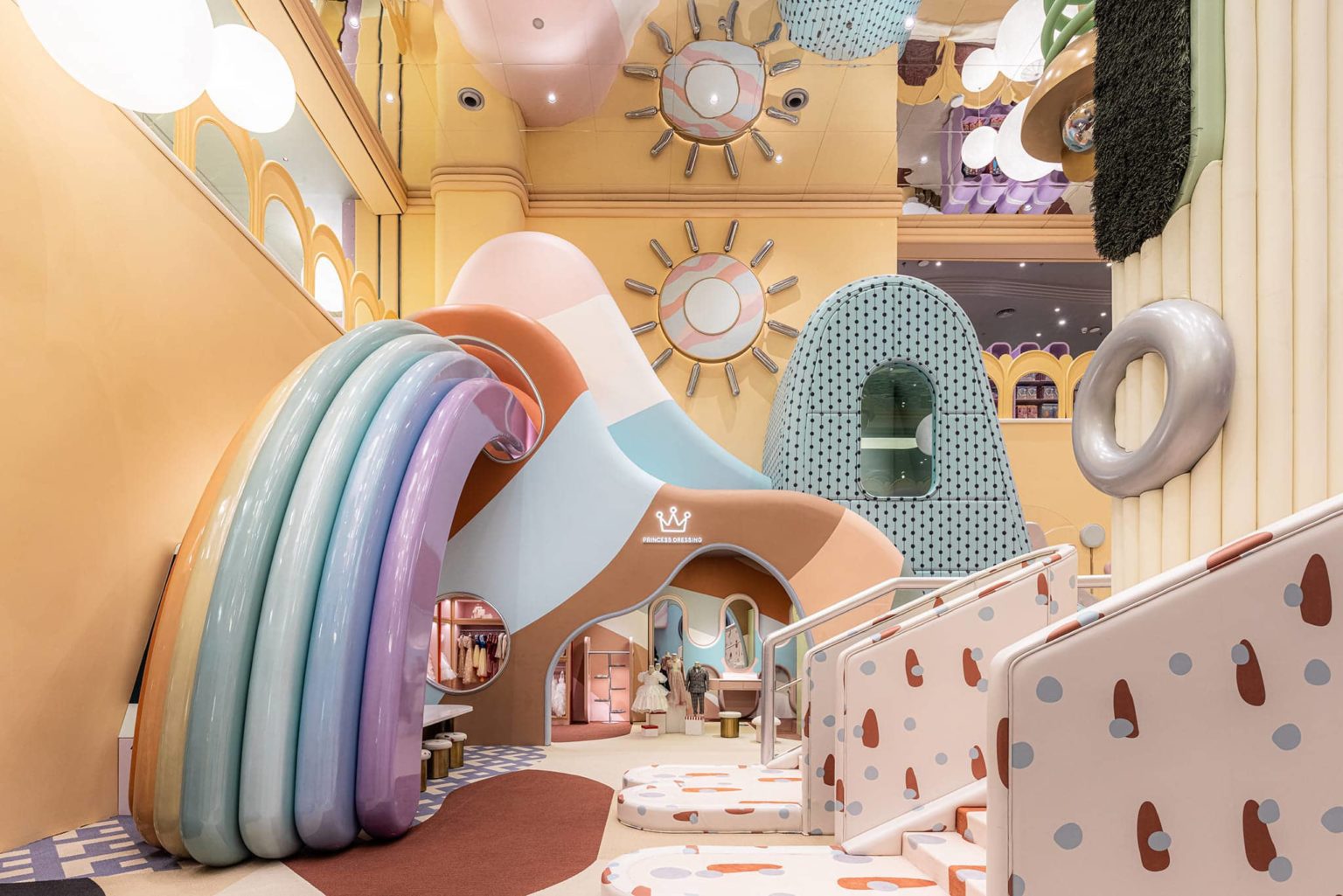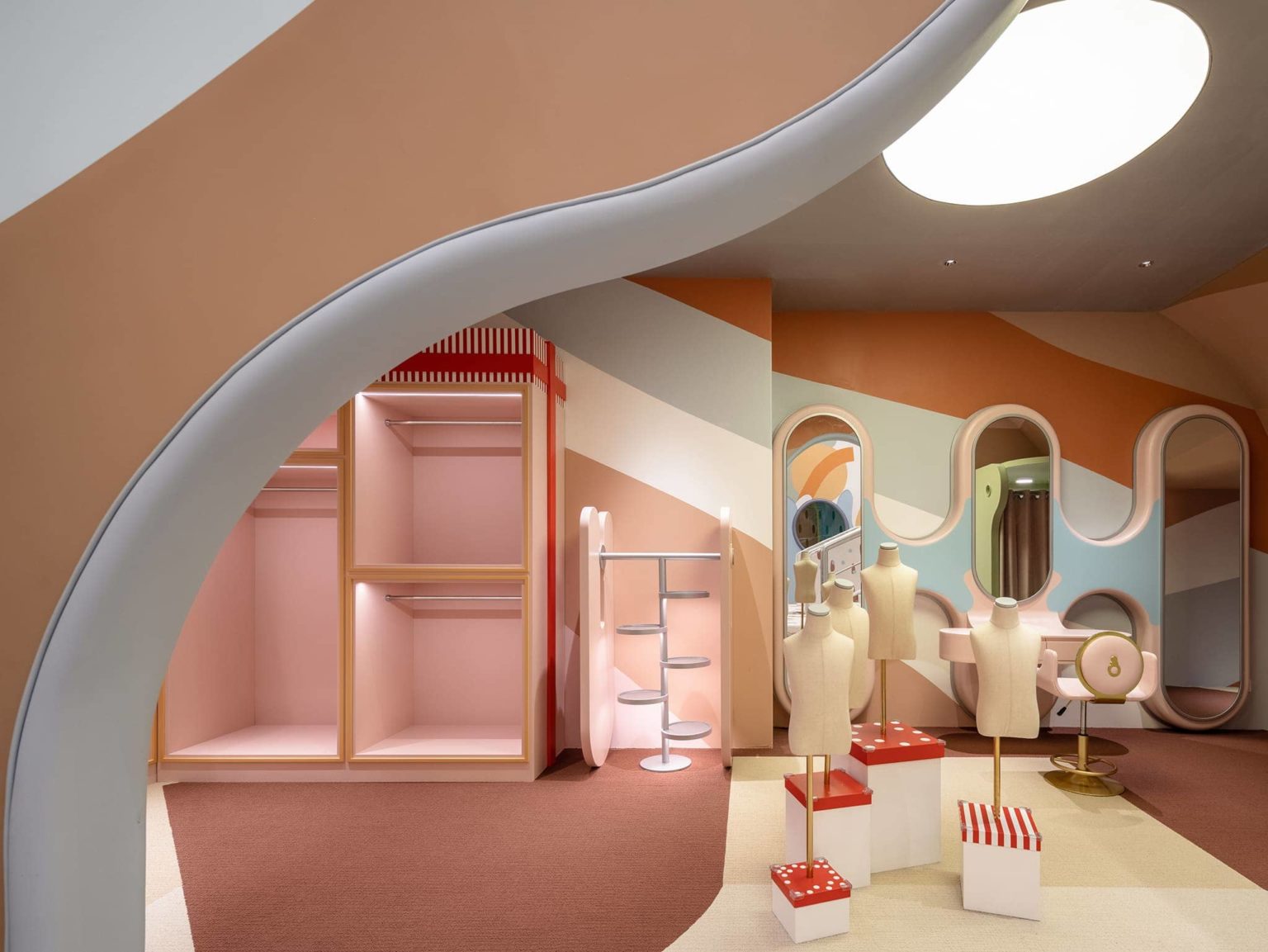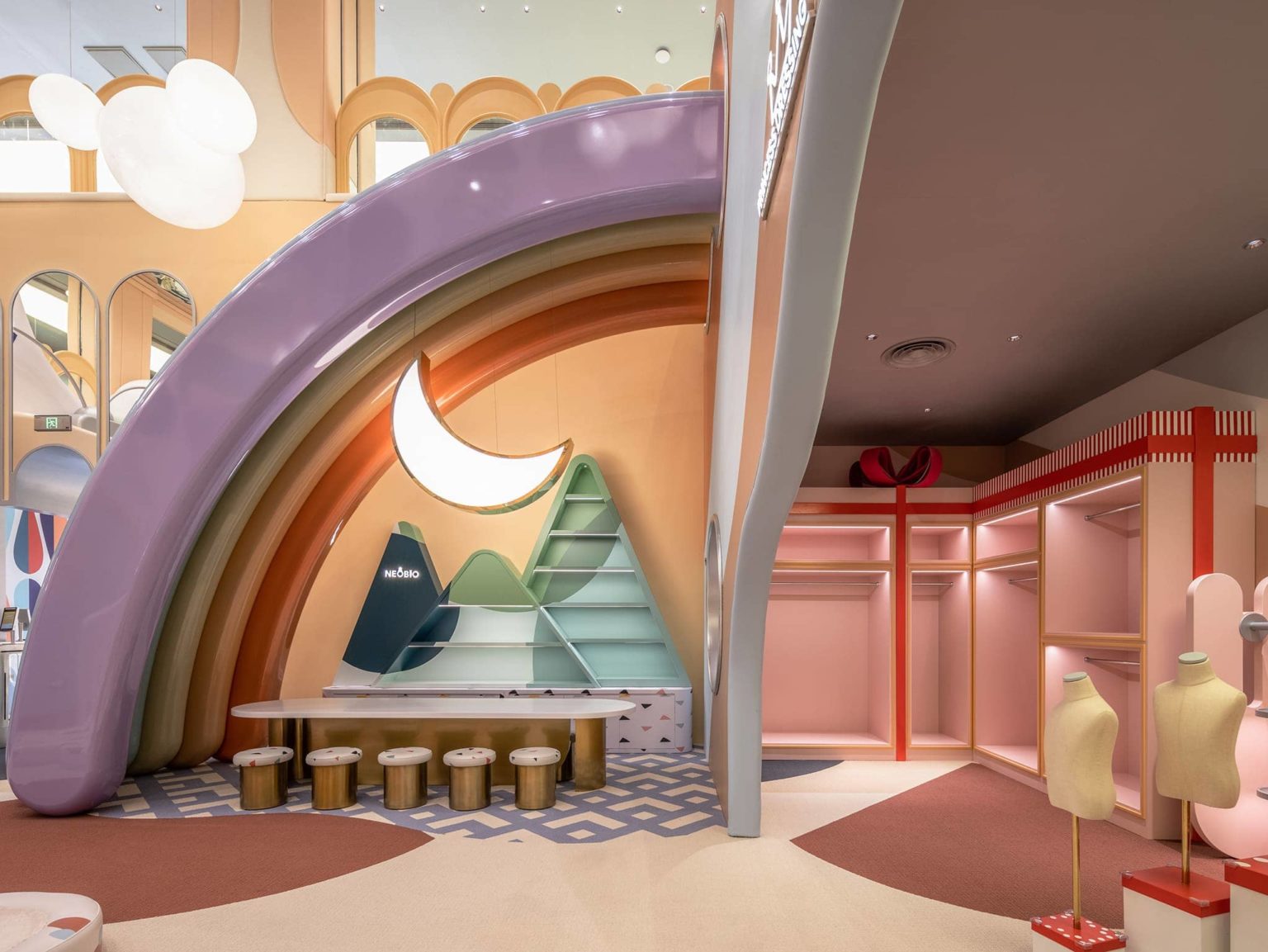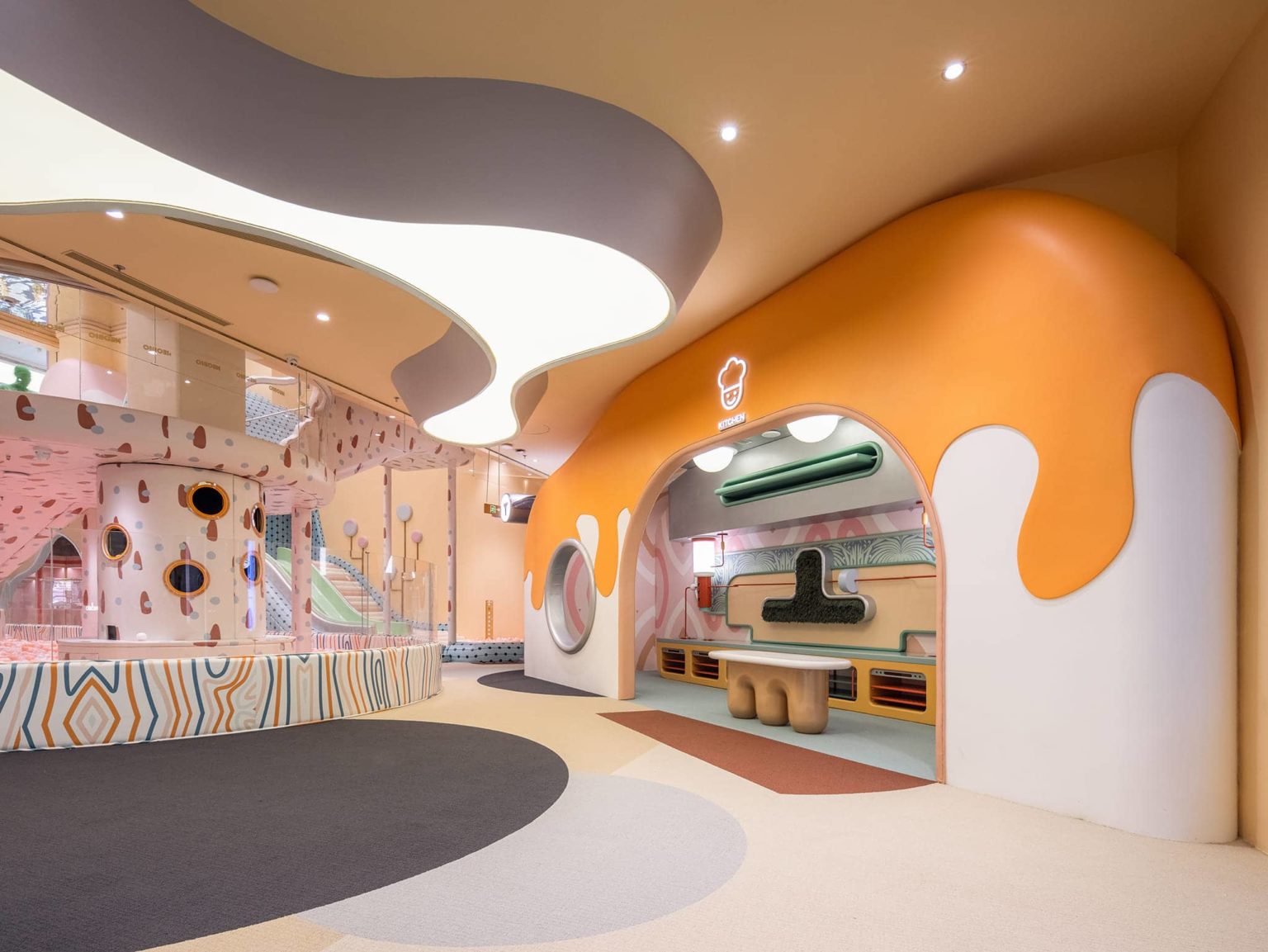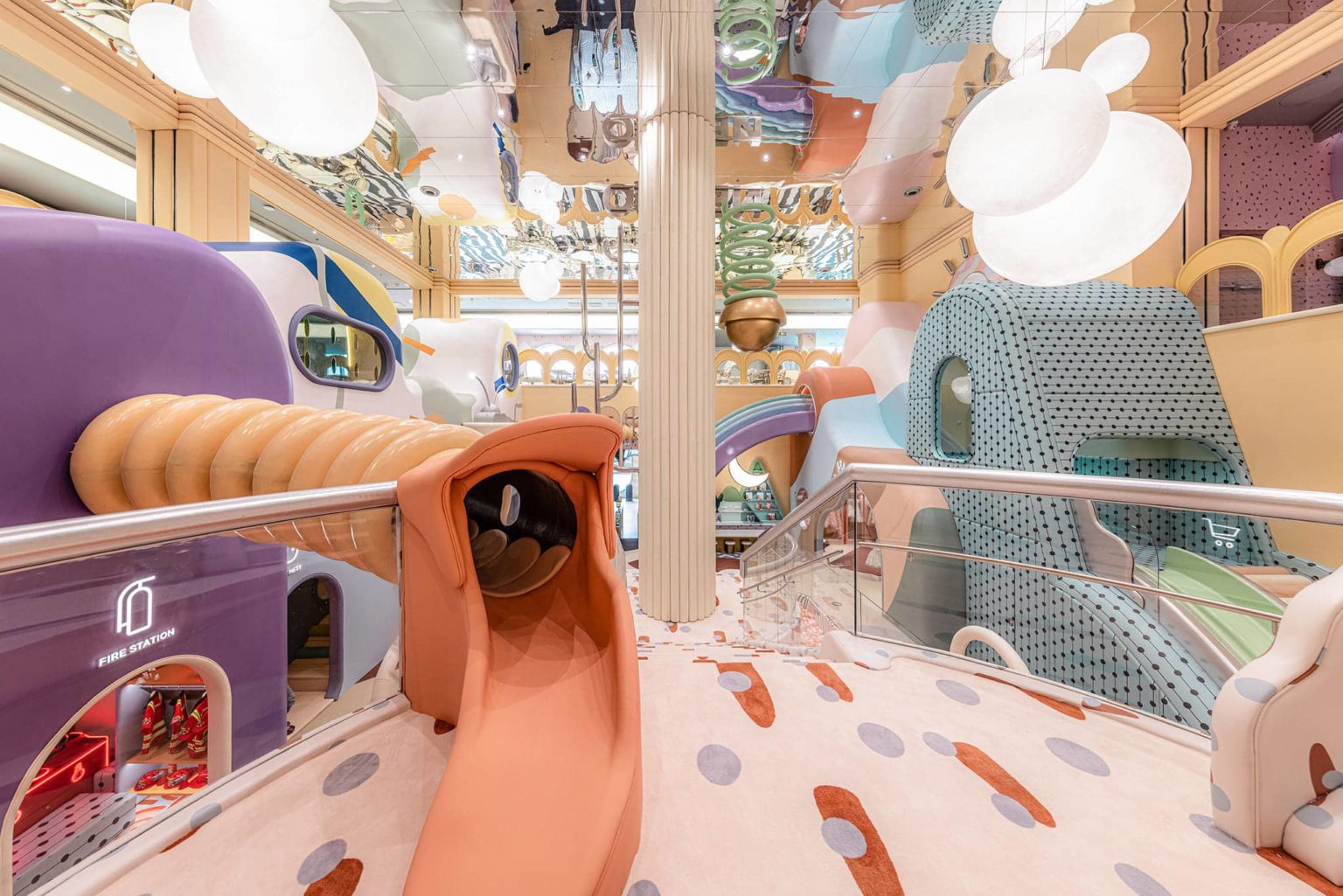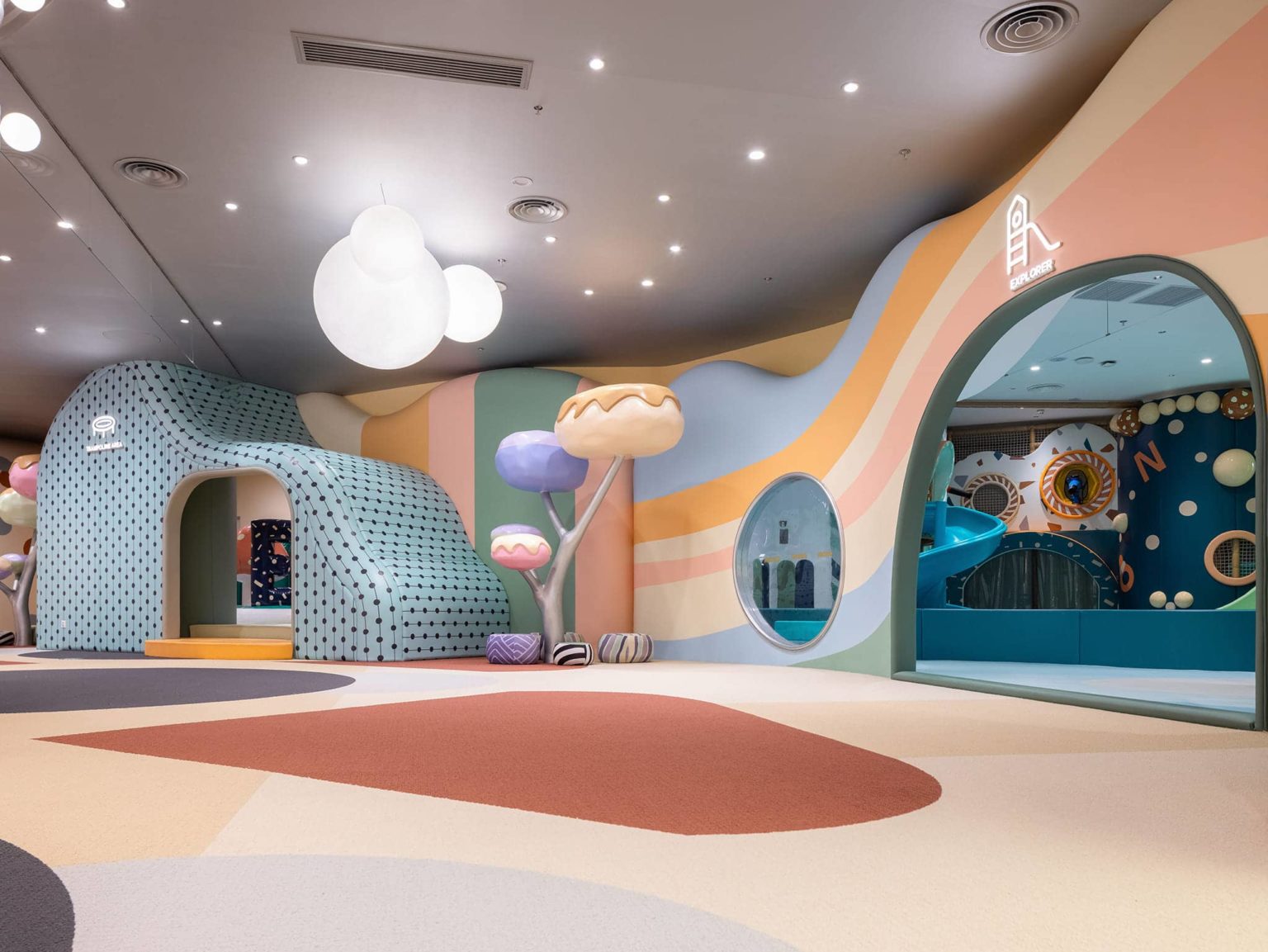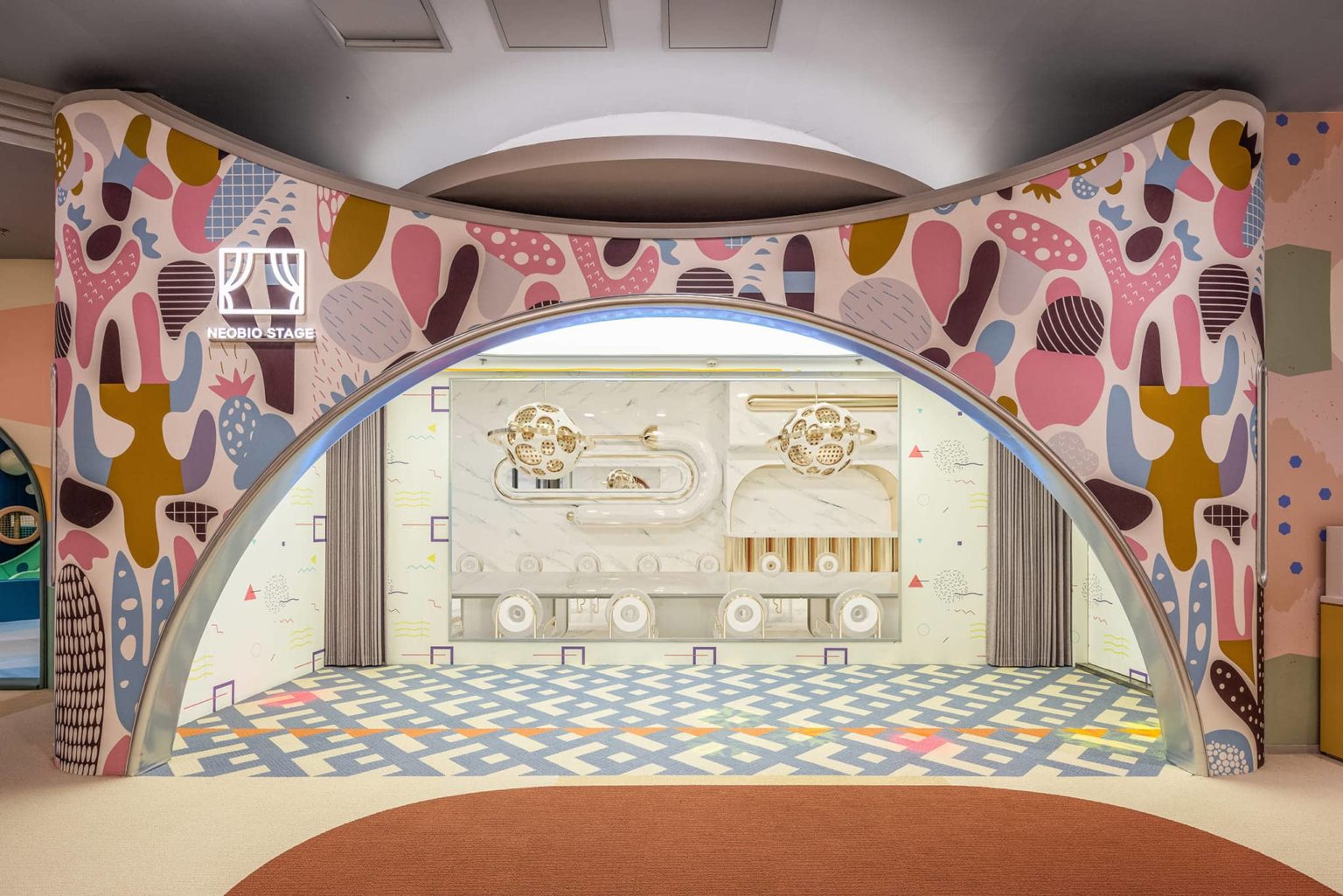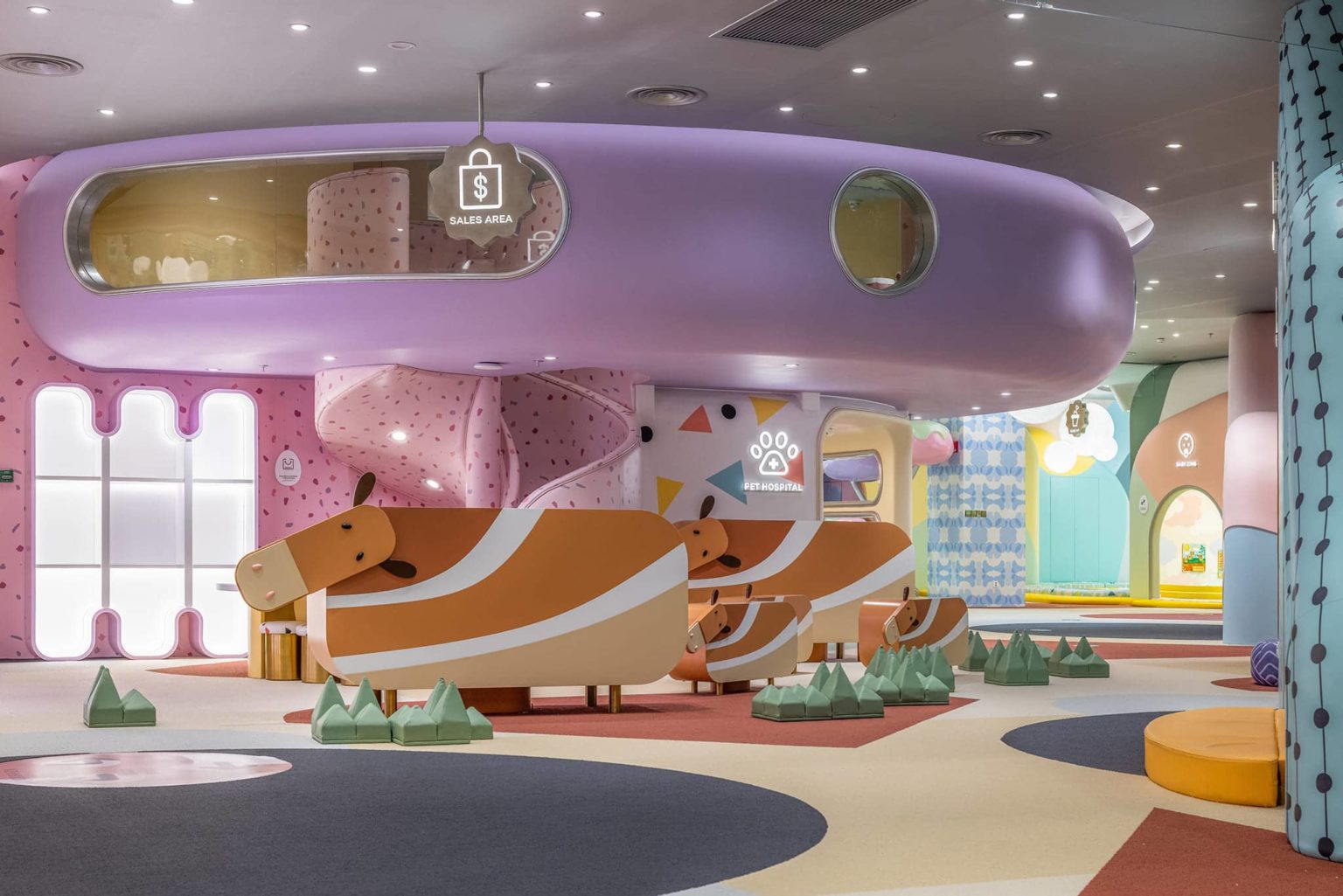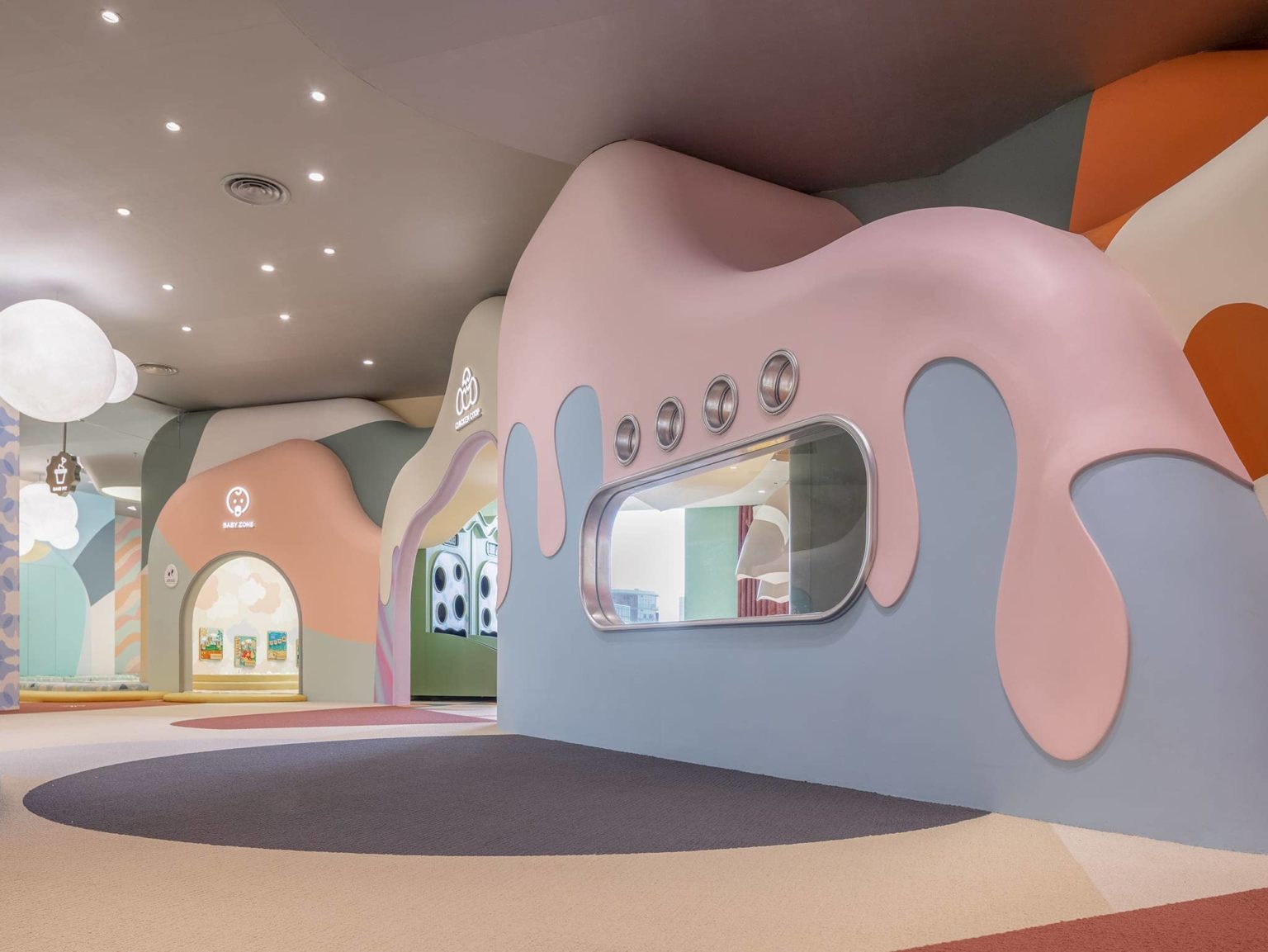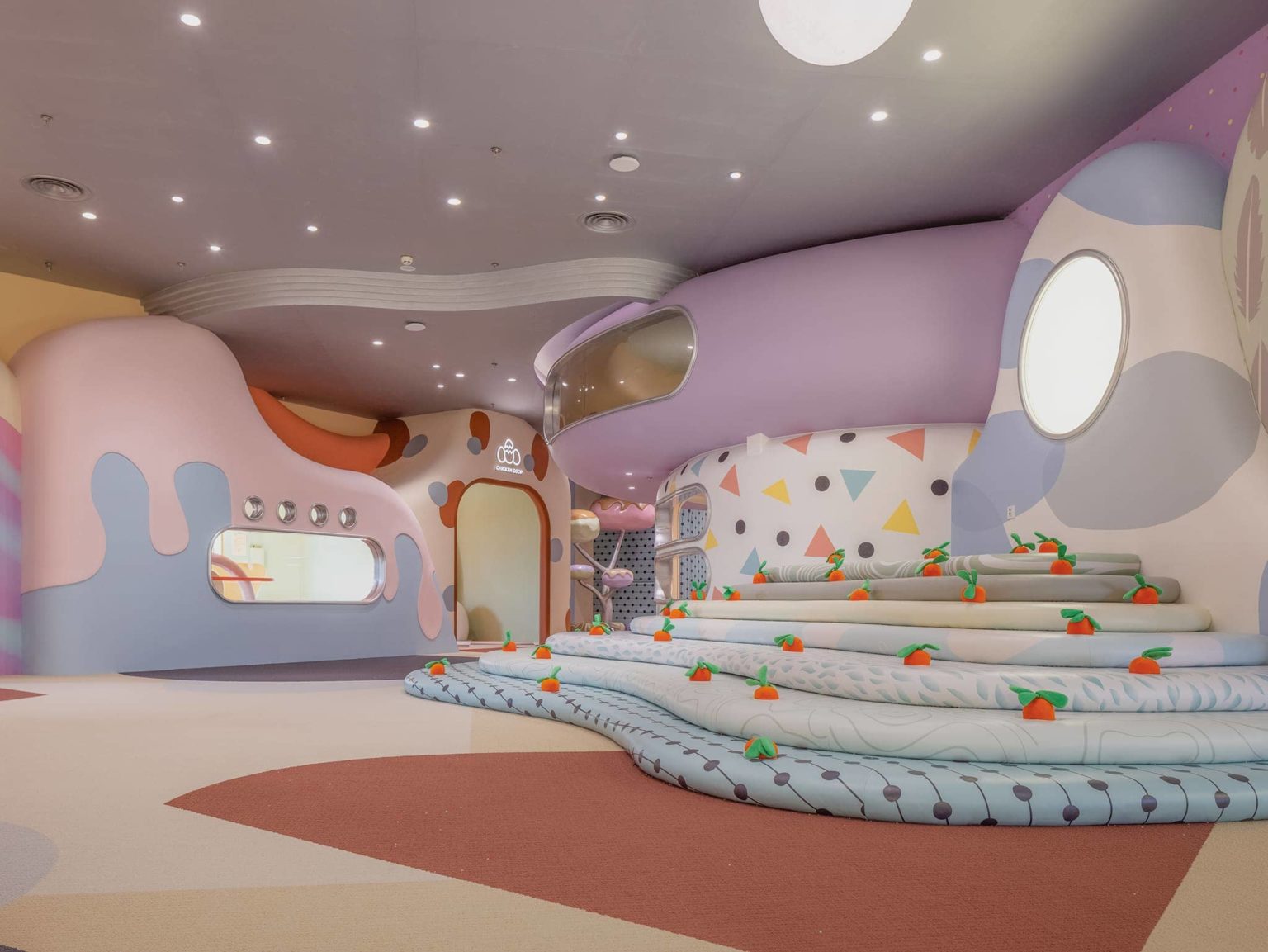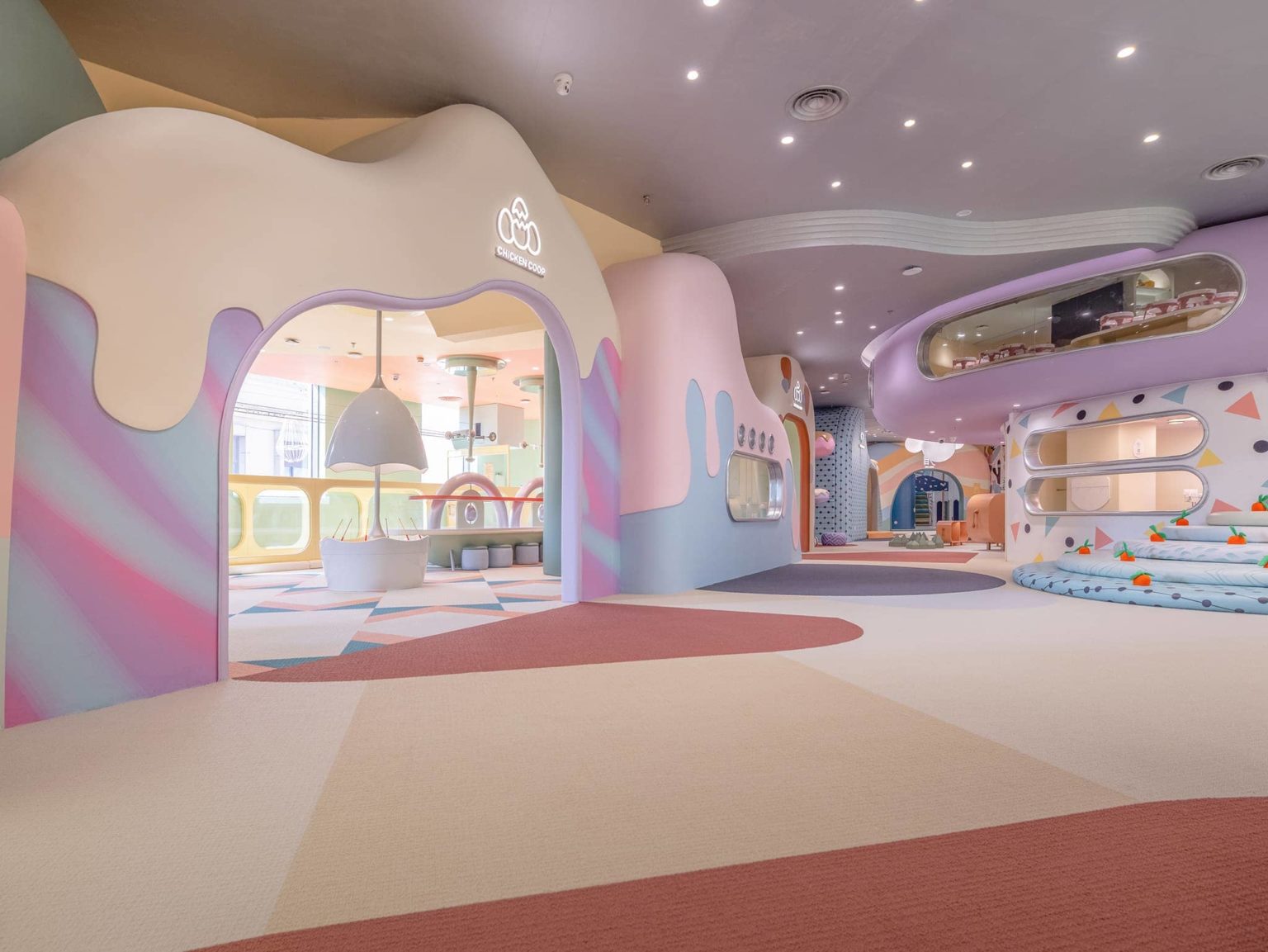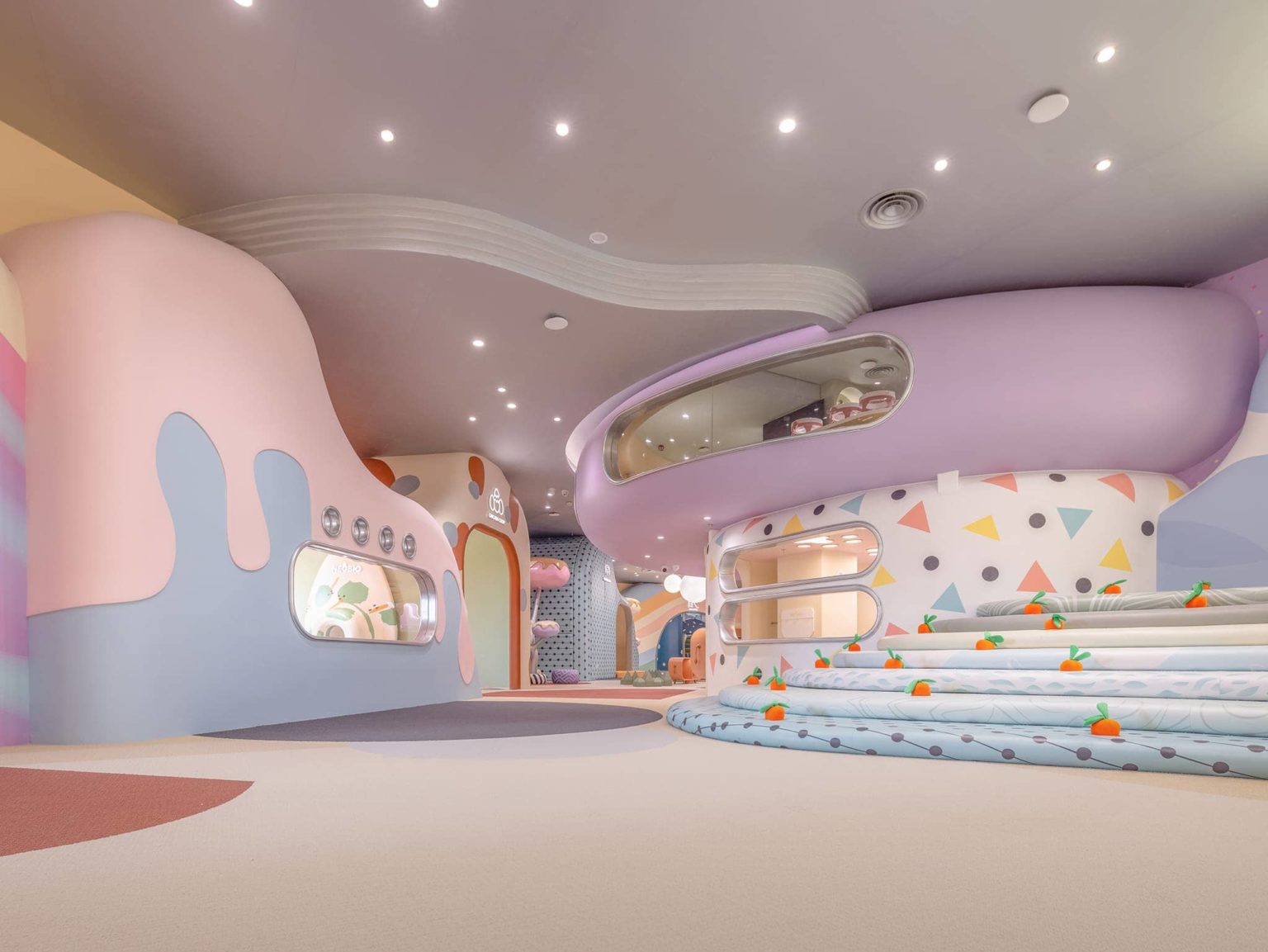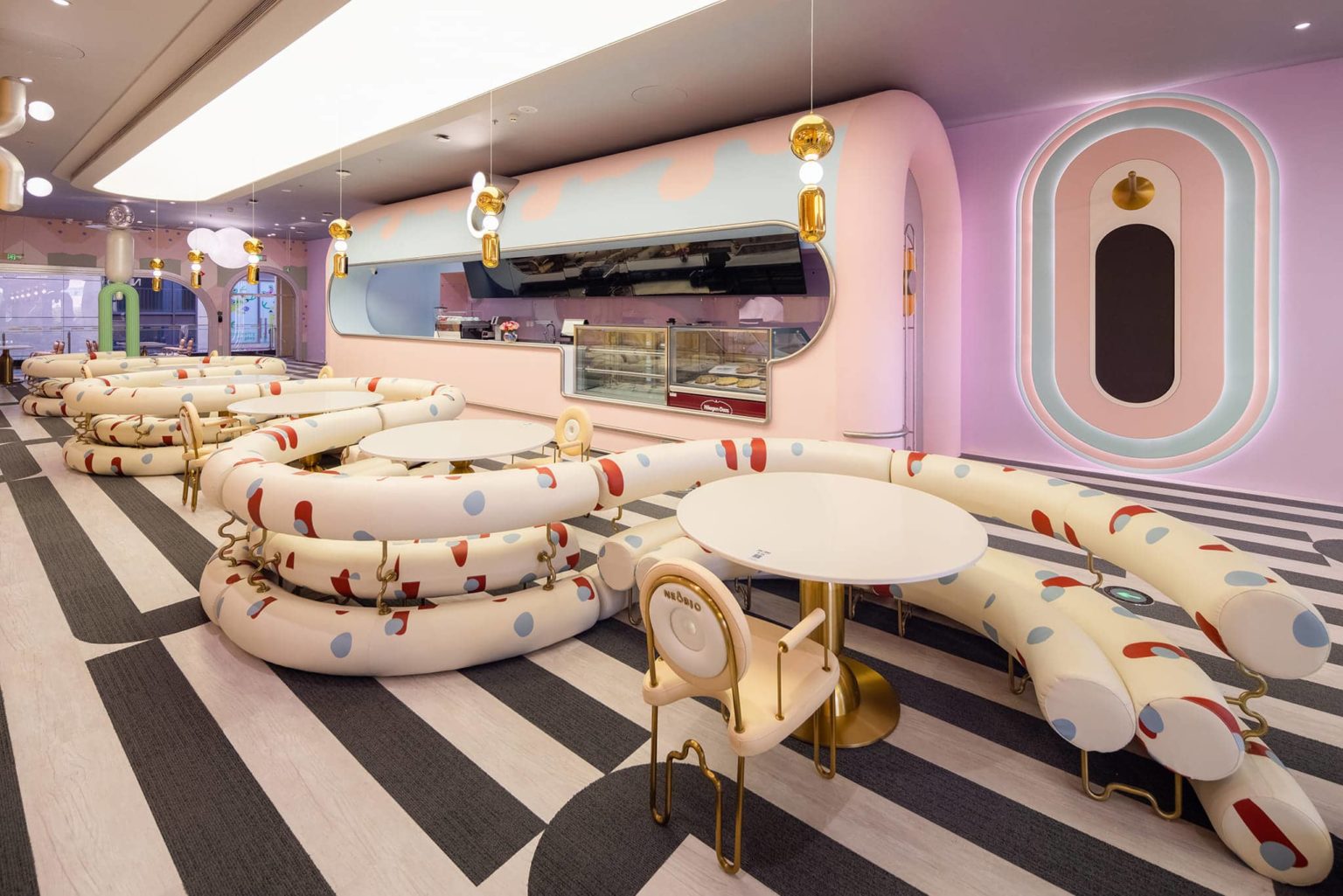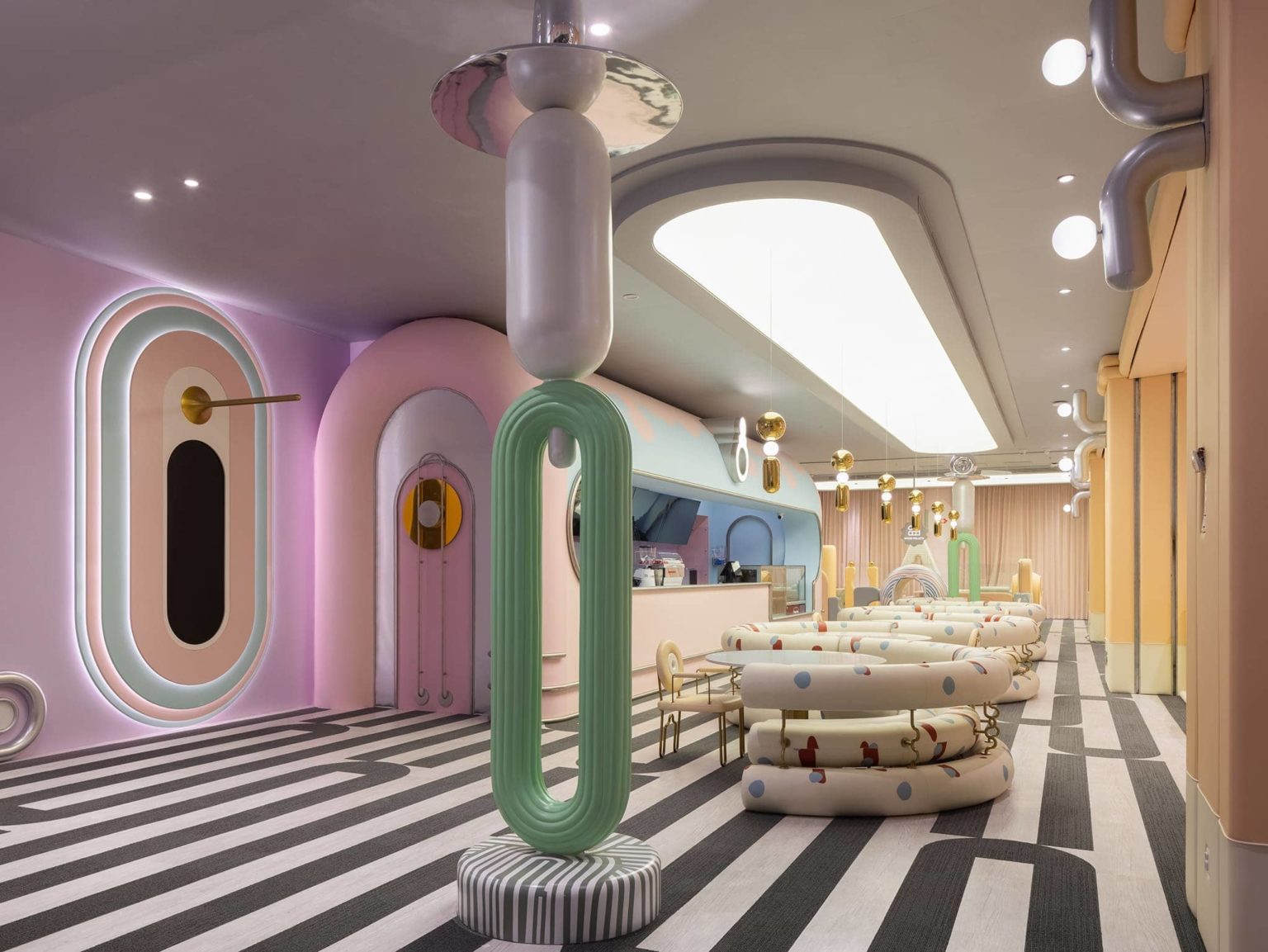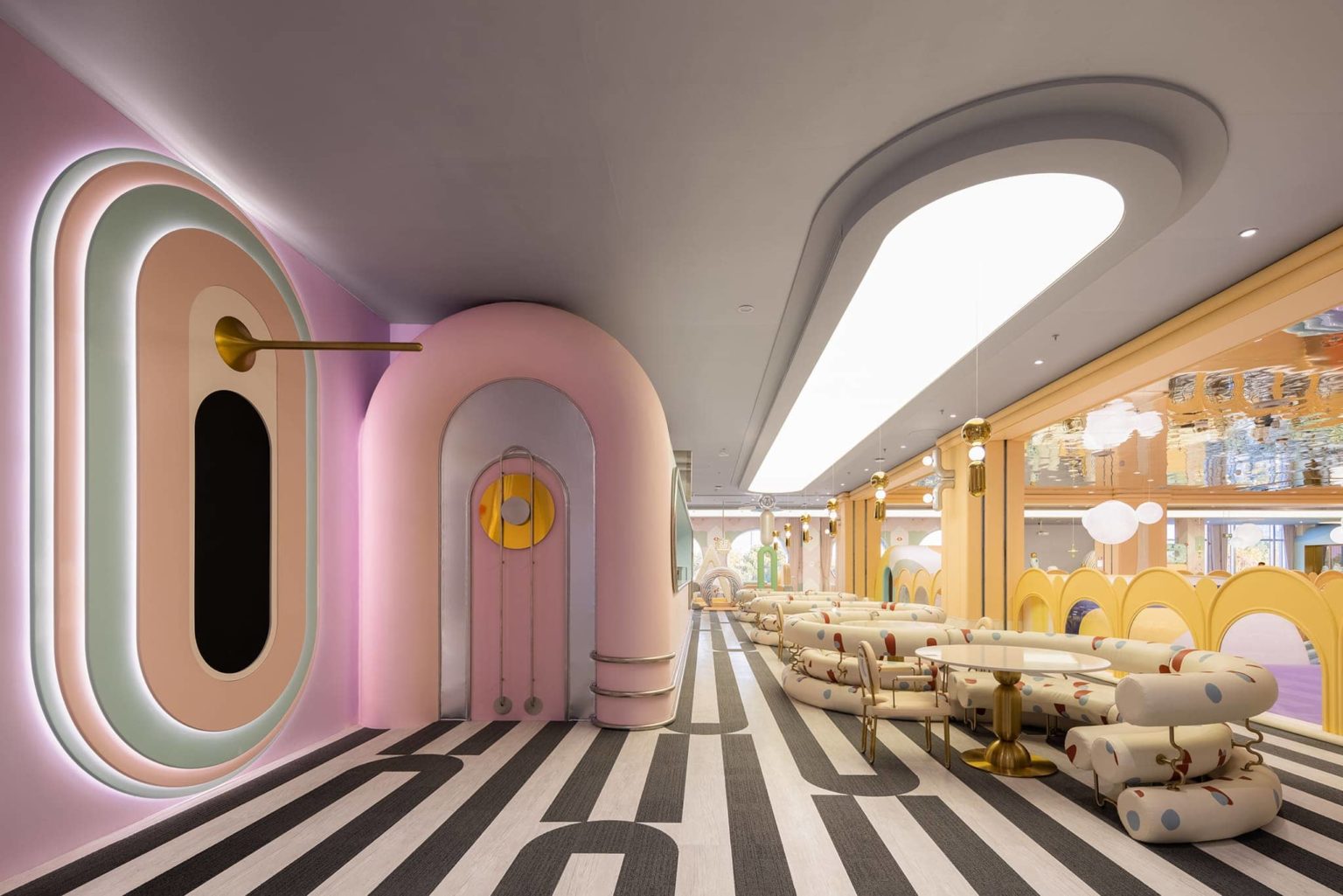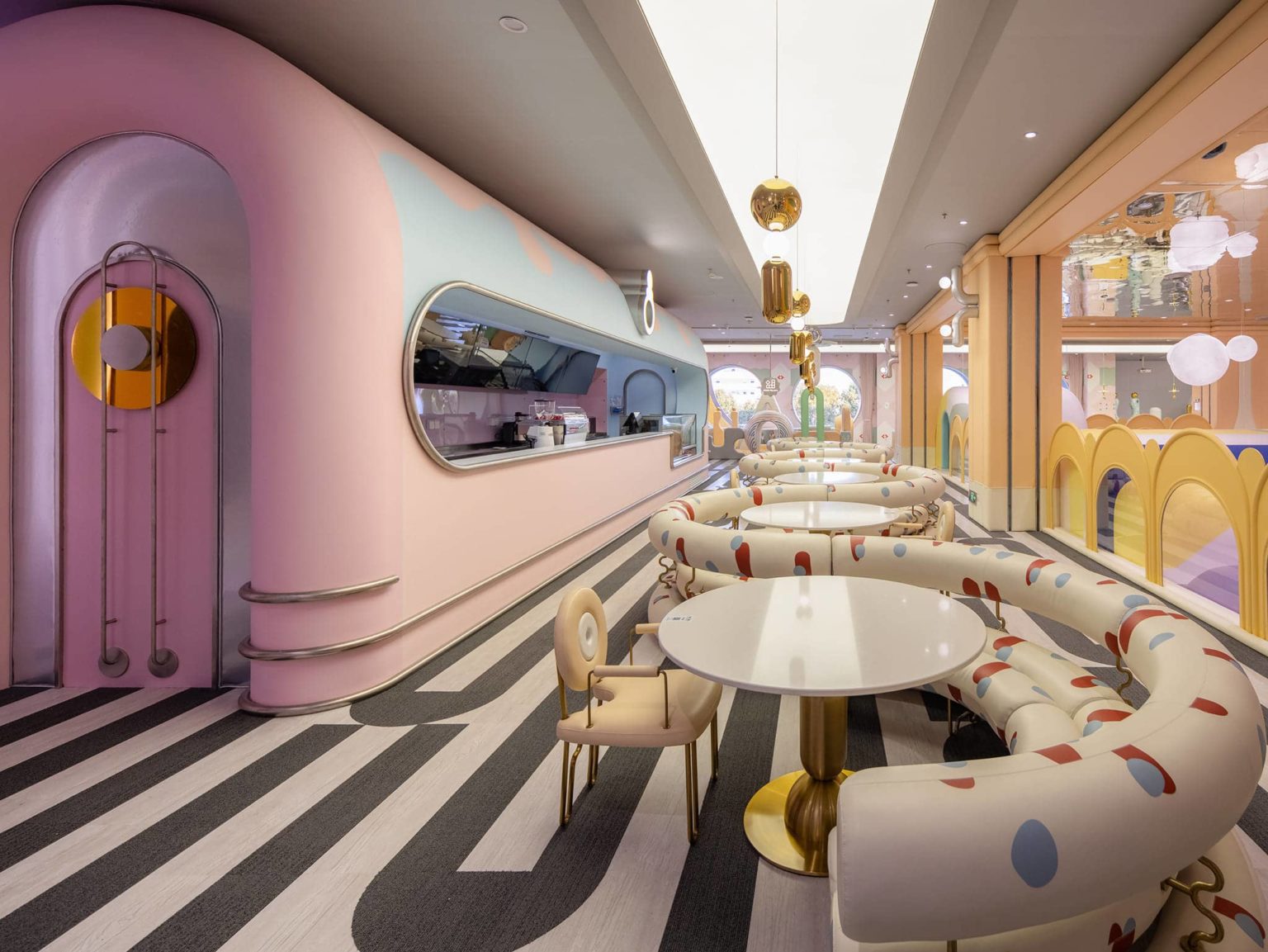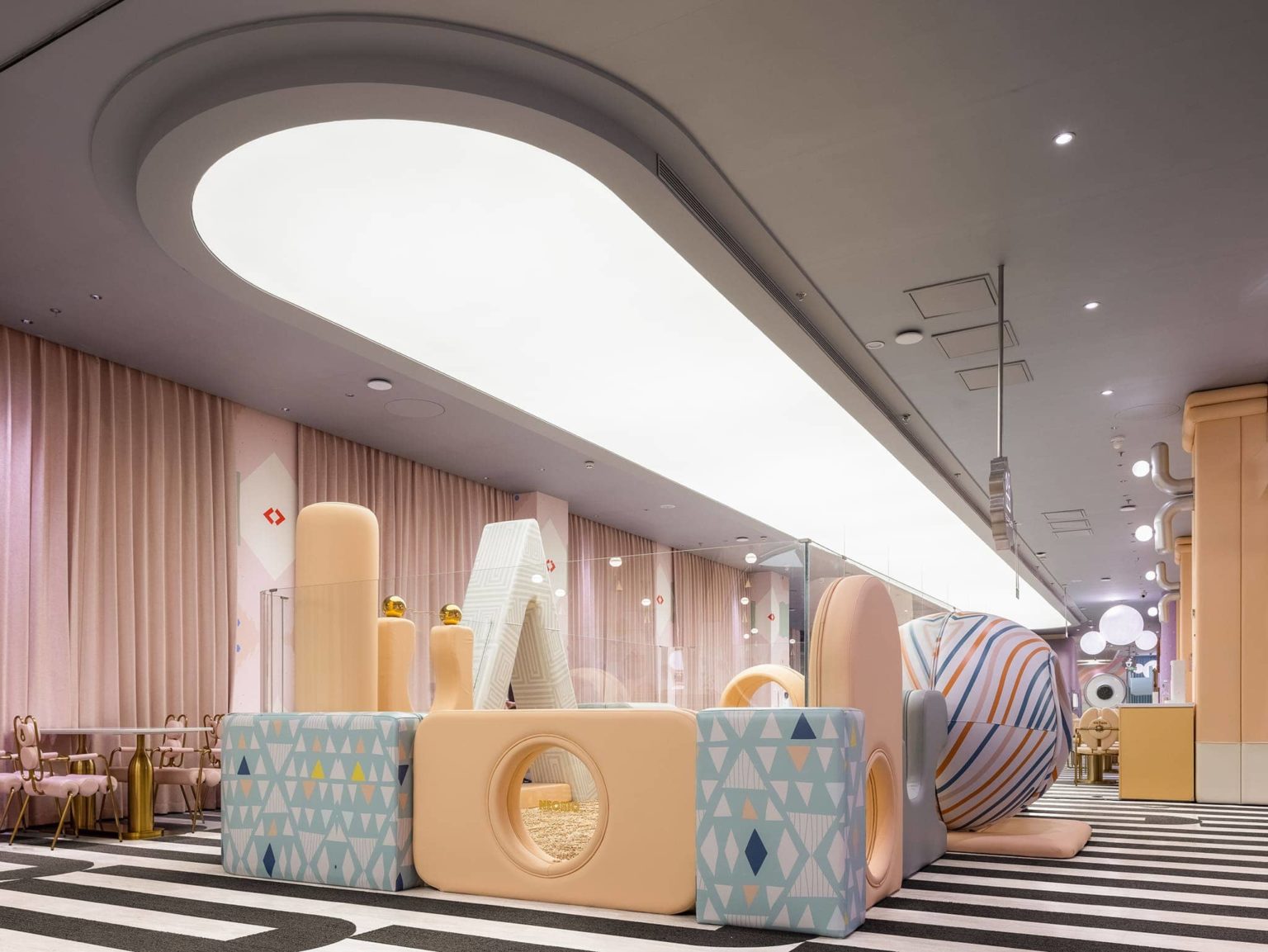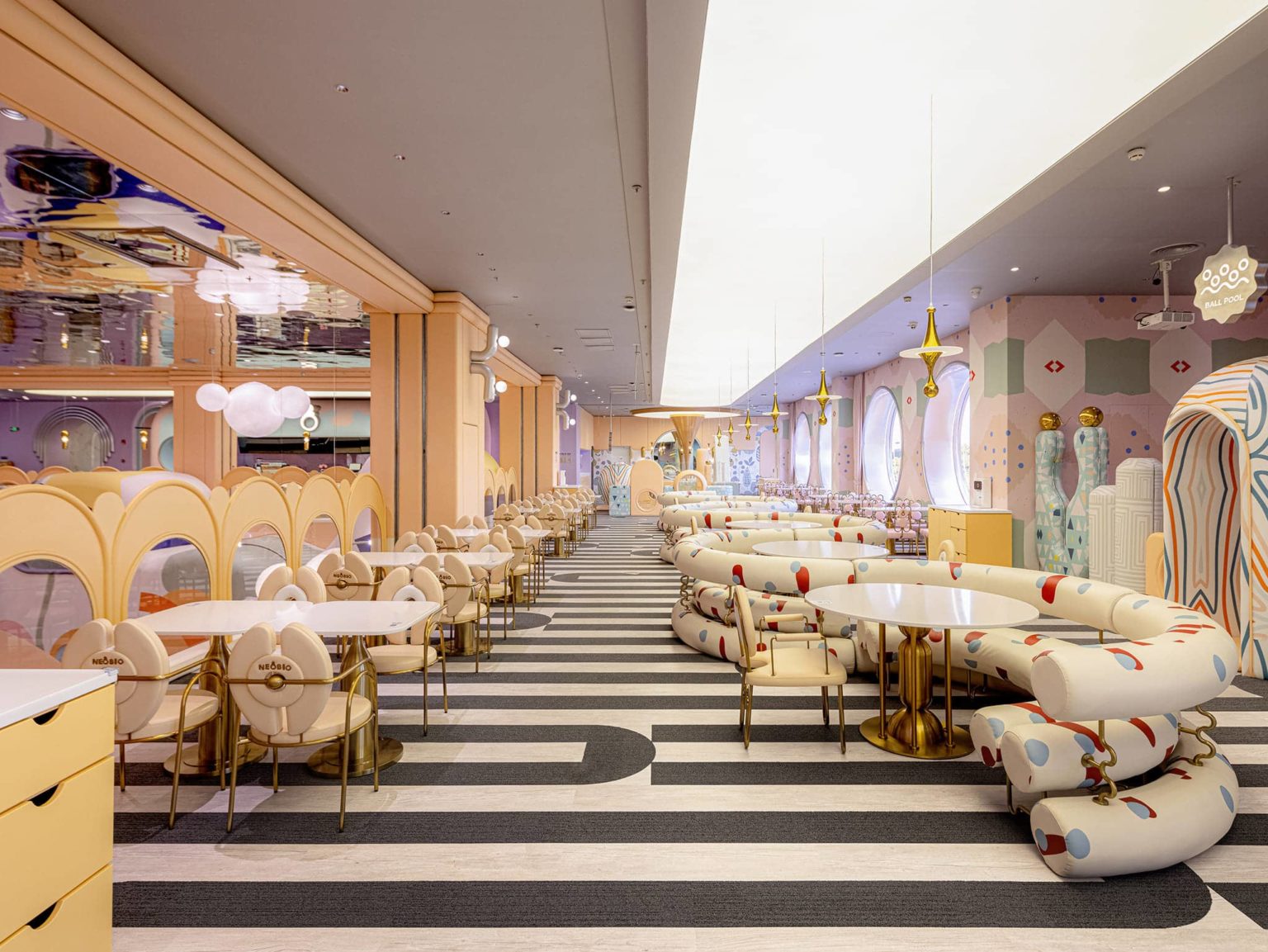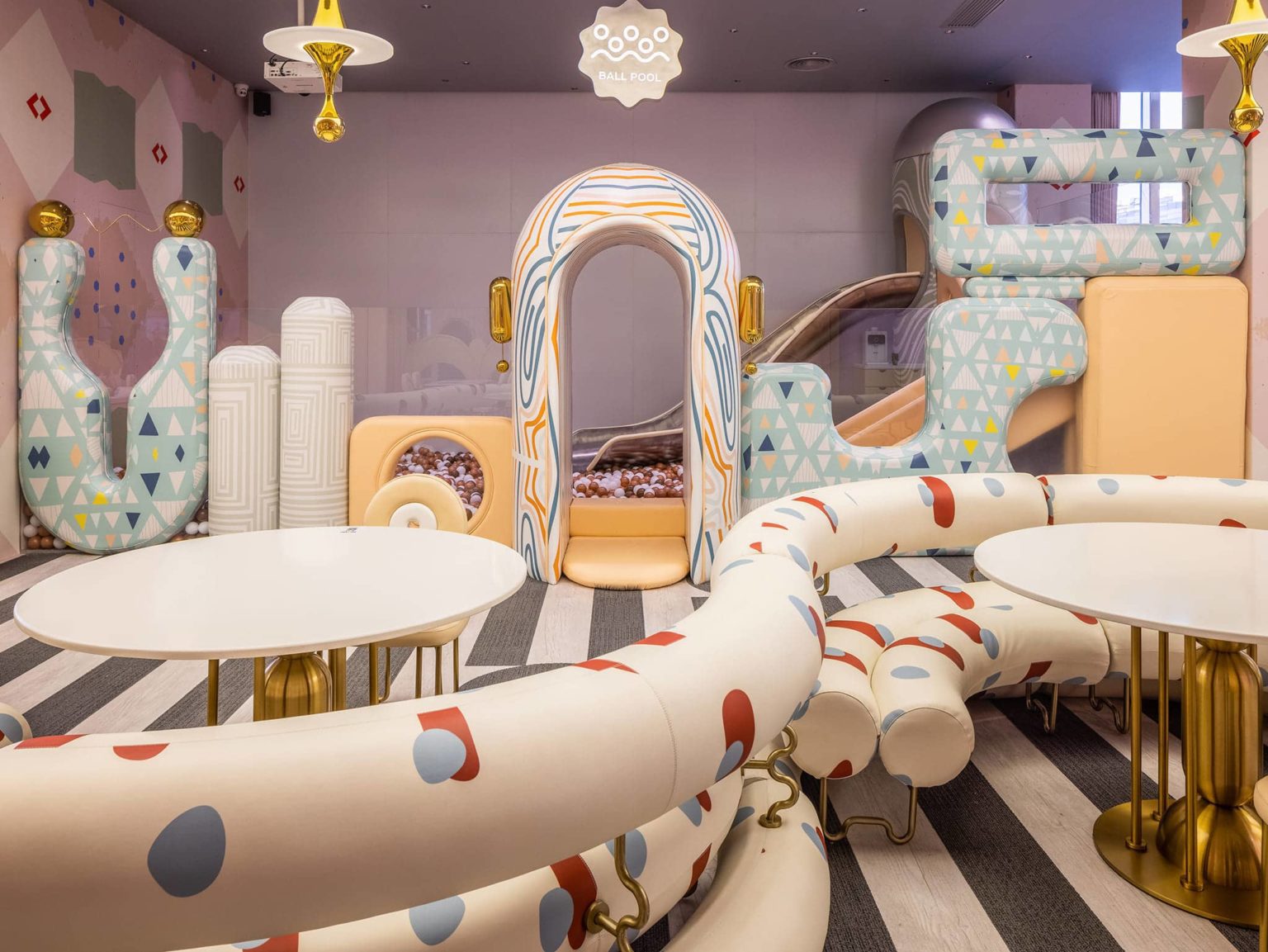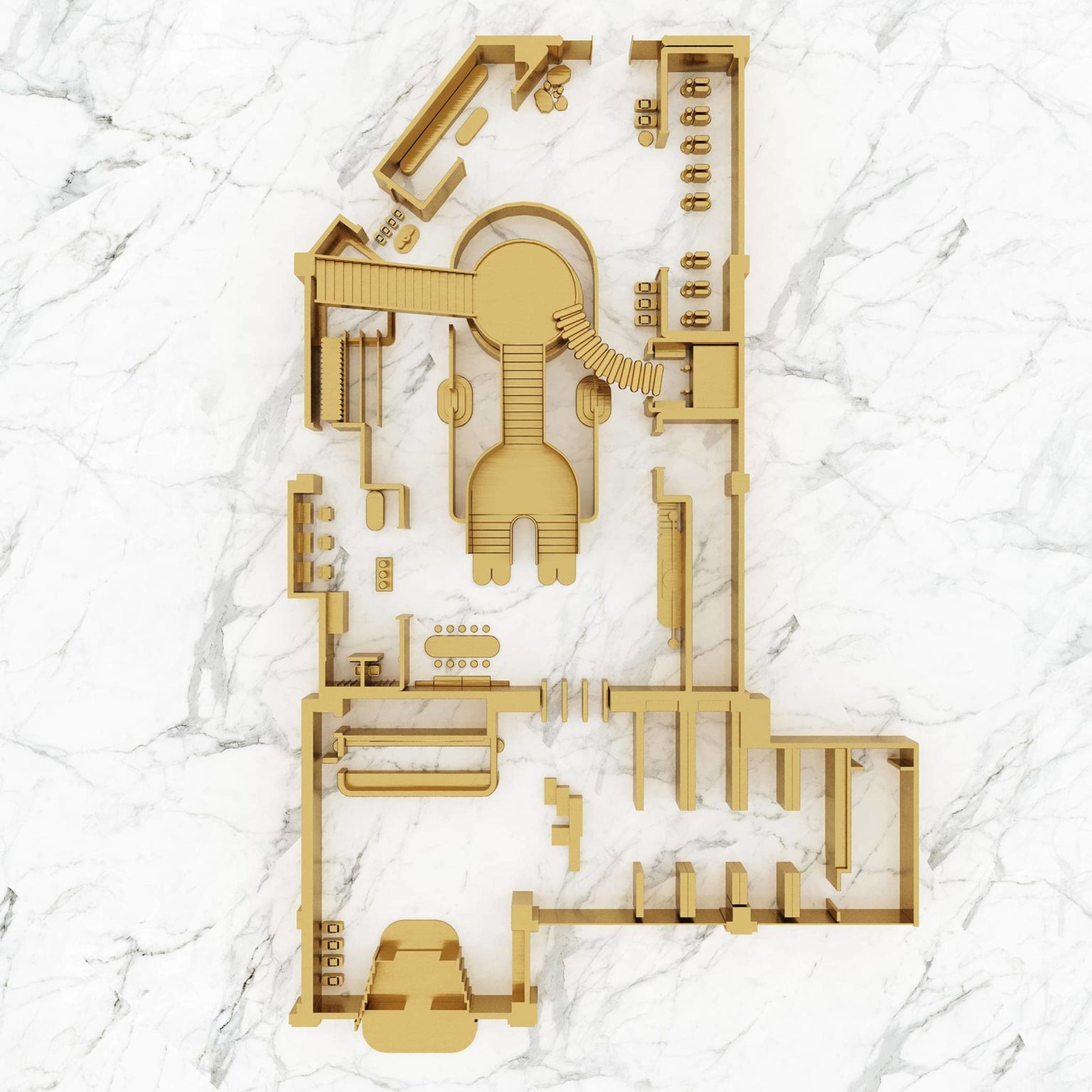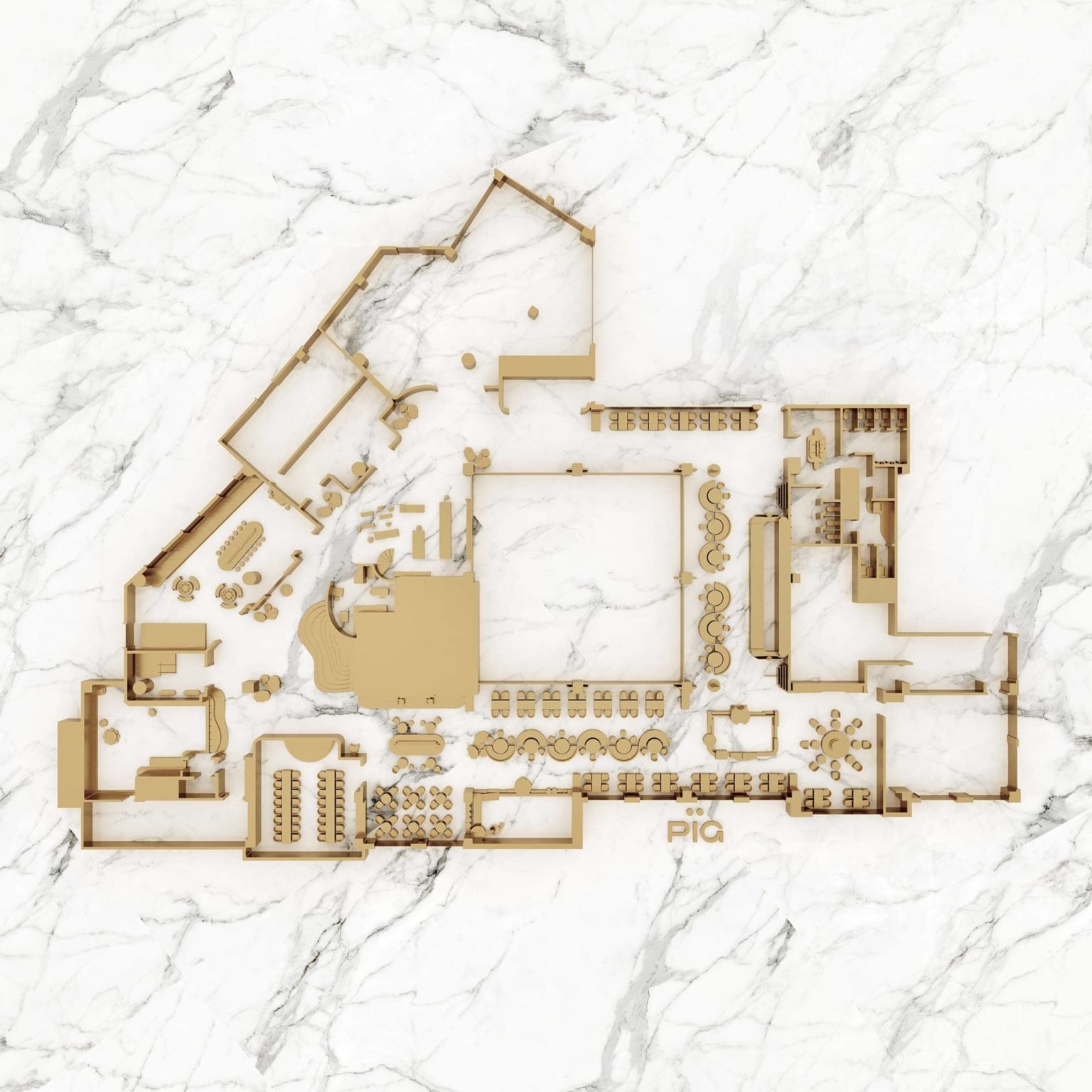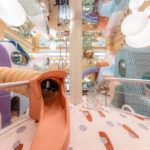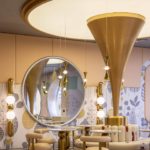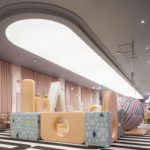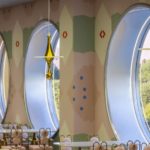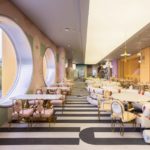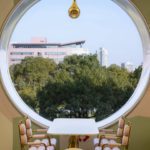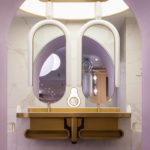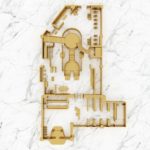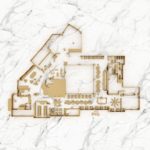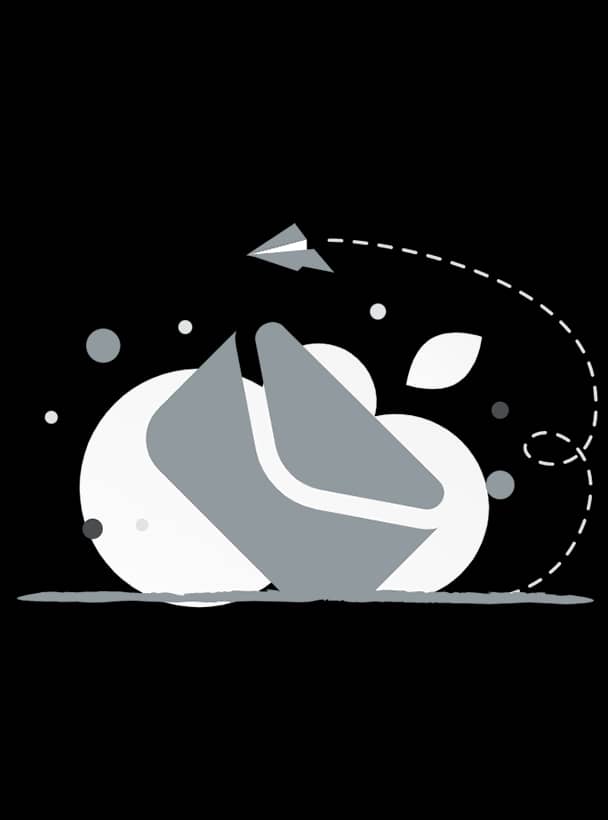Project Credits & Specs:
- Design Firm: PIG DESIGN
- Photographs: SFAP
- Location: Shanghai, China
- Area: 4,000 m2


Project Description:
Li Wenqiang conceives NEOBIO’s new premise in Shanghai as a “back mountain”
“In the Minnan language, the term ‘Aosua’ means ‘back mountain’. The obscure back mountain in childhood memories disappeared as time passed, and its name was also gradually forgotten…” — Li Wenqiang
NEOBIO is an original Chinese indoor entertainment brand focusing on high-quality space and super-creative content. Every time it arrives in a new city, it becomes a landmark for local parents and children. After completing its Shenzhen store, PIG DESIGN led by Li Wenqiang was invited to conceive the brand’s new premise in Shanghai. Amidst a highly modernized urban context, the project’s differentiated design = reshapes a ‘back mountain’ that is rooted in nature and provides an exploratory environment.




“Soft” presence in the urban context
The project is located in Zhangjiang Town, within Shanghai’s Pudong New Area. Zhangjiang is an area with many of China’s cutting-edge technology companies, and to some extent, it reflects the innovative prospects for humanity’s future. NEOBIO’s new store in Shanghai features an extraterrestrial organisms-like singular architectural appearance, which contrasts yet coordinates with Zhangjiang’s built environment. The building’s facade extends the brand’s primary hue and neutralizes it as an earth-toned yellow, perfectly matching the natural theme. The pacifier-shaped visual symbol and a series of curved doors and windows stand out against the gray urban backdrop, creating a three-dimensional “Solarpunk” sculpture that wraps up a “nest” that nurtures new life.





“Second nature”
The layered and irregular entrance mimics a time cave that is mixed up with contrasting light and shadow, opening up a journey for the imagination to roam. The silhouette of the “mountain” transforms into a shoe-changing area with various large and small spatial surfaces and furniture modules. This area uses abstract colors and patterns to depict memories of nature, while the velvet grass installation adds a surreal visual appeal.


An isomorphic relationship exists between the spatial forms and the activity background, giving the whole place a unique character. The presently occurring childhood in the urban context, and the long-gone “back mountain” in childhood memory, children who are growing up, and adults who have an “inner child”, all those different roles and stories mix together, creating seemingly familiar yet completely new scenes, which sustain a collective memory of this place and generate new experiences and emotions.







Storytelling experience that fuses the real and the illusionary
The main space is a two-level volume that contains scenes with rich depth and interior furnishings. “Back mountain” is the theme that runs throughout the spatial design. Rainbow, sun, cloud, and moon elements surround the central mountain column. Their colorful, vivid, and simple scribbles become concretely real experiences, stimulating an affinity for this space. Nature’s palette endows the space with a full-color spectrum, while numerous visual elements unite to create a lively holistic scene. It echoes Henri Matisse’s idea of playing music on the canvas by using colors.






The real and the illusionary intermingle in this space. The new era of education focuses on encouraging children to discover rather than merely imparting knowledge. In this limited space, inclusive, interactive scenes form a spatial environment filled with mountain, field, and forest elements, bringing infinite possibilities for exploration. Through bold imagination and artistic expression, the design brings “natural scenery” into the space, creating a desired destination for kids where they immerse themselves in discovering nature and perceiving seasons.









People-friendly details and scales
The free circulation route connects a series of spaces and shows the emphasis on users in various aspects. The design adopts a low-saturation and weak-contrast color scheme and absorbs naturally warm textures. The white light membranes simulate daylight, producing a freely diffusing and comfortable light environment.






Streamlined boundaries and round corners, environment-friendly materials, and anti-skid treatments, as well as the dynamically presented functional system, achieve a delicate balance between clarity and curiosity.




Response to Nature and childhood memories
Taking “back mountain” as the design theme, the project is a product of memories. The design uses natural elements to create spatial scenarios, guides users to interact with the space in playful ways, and encourages heartwarming communication between people and nature. This “consciousness maze” represents past memories, whilst also connecting with the future.



This project creates a fairyland for both adults and children. It provides a place where parents and kids spend time together, which helps cultivate a “seed” for enlightening and inspiring children and this “seed” will grow into a “forest” as they grow up in the future.

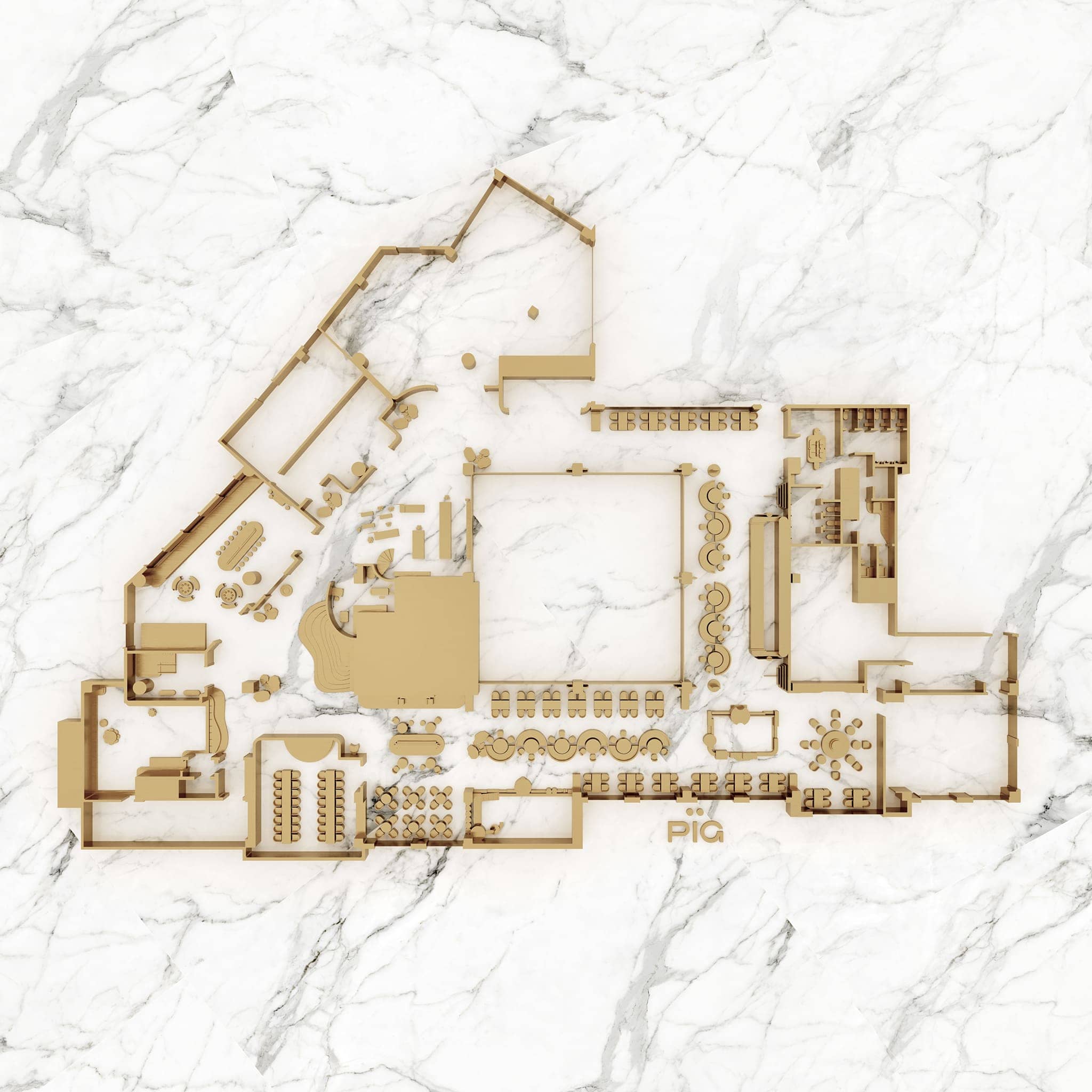
The project description is provided by the designers.
About the Designers:

Based in Hangzhou, PIG DESIGN was founded in 2015. The studio conceives spatial structures in a way similar to literary creation, emphasizes the practical value of art in design applications, and opposes the free breeding of conventional aesthetics in space.

